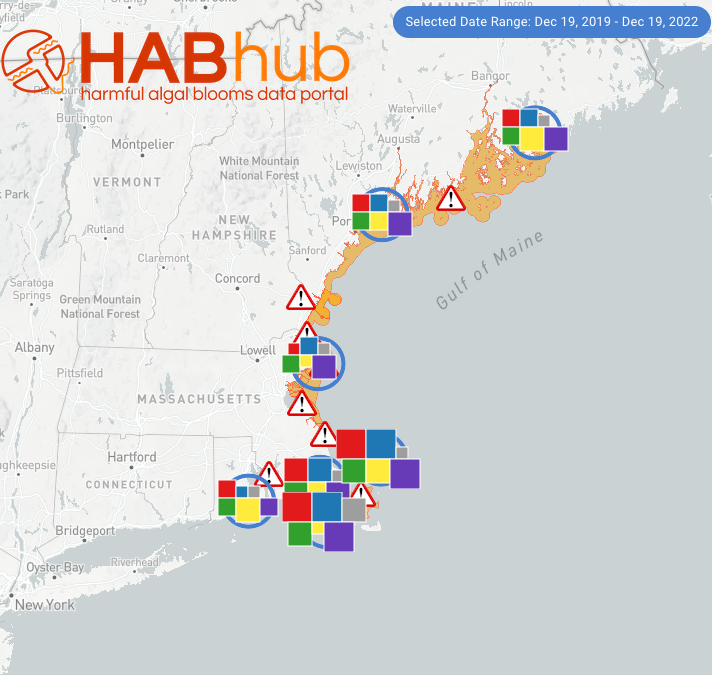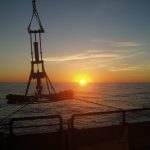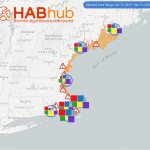Aim 1: Engaging regional stakeholders concerned with the safety of marine resources.
An important aim of the WHCOHH CEC is to enhance communication with stakeholders who are responsible for monitoring HAB outbreaks and protecting the public. Our efforts focus on promoting communications and data sharing among HAB stakeholders in New England, creating information technology infrastructure and resources for accessing and visualizing diverse HAB data. These communications and tools are designed to help strengthen working relationships among participants, improve information sharing and the coordination of event response efforts, and enhance bloom tracking and data interpretation. Our ultimate goal is to support HAB management capabilities in the region.

Activities and Highlights:

We convene the annual Gulf of Maine HAB Science Symposium to engage stakeholders concerned with the safety of marine resources, to provide a forum for communication and information, and to foster improved monitoring and understanding of HAB impacts in the region. This meeting incudes participation by researchers, state and federal managers, and other regional stakeholders. The agenda for the 2022 meeting is available HERE; information about the 2023 meeting will be posted when available.

The CEC developed the Northeast HAB website, which provides background information about HABs in the Gulf of Maine region, as well as access to bloom monitoring data and commentary, forecasting model products, and data collected by HAB sensors deployed in New England waters. The webpage also offers a number of resources for educators interested in bringing HAB science to their classrooms.
The CEC is working with co-I M. Brosnahan and software engineer E. Andrews to develop WHOI HABhub, a data portal that aggregates diverse HAB data for creation of an interactive map and time-series plot reports in near real time. The goal of this portal is to provide the best possible situational awareness on the status of HABs and HAB toxins in New England, while also facilitating easy access and comparison to historical data. This data portal uses open-source software and will be fully documented to facilitate broad adoption by other HAB monitoring groups.